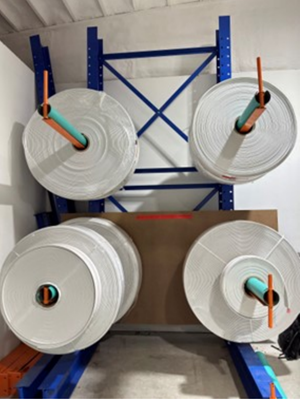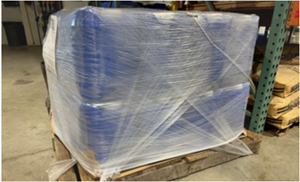September 2023 Vol. 78 No.9
Tech Tips
Ensuring quality control and proper storage of cured-in-place pipe lining
By NASSCO Member Travis Savy, Technical Director, Savy & Sons
(UI) — Cured-In-Place Pipe (CIPP) has revolutionized the rehabilitation of underground pipelines, offering a cost-effective and efficient solution. What was once considered an alternative solution to pipe replacement, CIPP is more and more, becoming the accepted go-to pipe rehabilitation method.
To ensure the growth of the industry, proper quality control, inspection, and storage of CIPP lining materials, including liners, resin, and calibration tubes, are essential. This will ensure the longevity and performance of rehabilitated pipelines. The NASSCO Lateral and Building Pipe Committee provides valuable insights on how to maintain the integrity of CIPP lining materials throughout the entire process.
Quality Control and Inspection:
- Liner Inspection: Thoroughly inspect the liner for any visible defects, such as wrinkles, folds, or misalignment. Ensure that the liner's length and diameter match the specifications. If any visible defects are discovered, contact the manufacturer or distributor immediately and do not install those products until they are tested and deemed safe for installation.
- Resin Mixing: Accurate resin mixing is crucial for consistent curing. When mixing resin, select a mixing paddle or device which is appropriate for the resin type and quantity of resin. Be careful to not draw air into resin while mixing, as air bubbles in the resin can cause water tightness and structural challenges. To assist with this, make sure that the mixing paddle is fully submerged in the resin mixture and do not run the speed of the mixer too fast to cause a large funnel where air can be drawn into the mix. Follow the manufacturer's guidelines for resin-to-hardener ratios and mixing times. Regularly test the resin mixture for viscosity and temperature to achieve optimal results. Never use resins that show signs of hardening or crystallization during mixing.
- Calibration Tube: Inspect the calibration tube for proper placement and secure attachment to the liner. Verify that the tube's dimensions match the pipe's specifications to achieve accurate liner expansion. In addition, choice of calibration tube should be paired with the cure mechanism to ensure the tube can withstand the type of cure and pressures of inversion and/or cure duration and has been appropriately tested for such. The calibration tube should also be pre-inspected for defects in the same manner as the liner
Proper Storage:
- UV Protection: When using UV or “photoinitiated” resins, it is important to never expose them to sunlight. Store these lining materials in a cool, dry, and dark environment to prevent exposure to UV radiation, which can degrade materials over time, or cause them to cure prematurely. UV-resistant covers can provide additional protection. UV resin can also lose its reactivity through thermal cycling (changes in storage of material; hot truck or warehouse, cooling off, and re-heating, etc.).
- Liner Roll Storage: Keep liner rolls off the ground to prevent contamination, exposure to dirt or moisture, and damage. Use elevated racks or protected pallets to maintain the shape and integrity of the liner. Be careful not to damage the coating of the liner when unrolling the material underweight. Damage to the coating can cause resin leakage and the inability to hold air pressure.
- Resin Containers: Seal resin containers tightly to prevent moisture absorption and ensure consistent viscosity. Make sure batch number and date of manufacture are documented and protected on pails, drums, or totes. Store containers to manufacturer's guidelines away from extreme temperatures and direct sunlight. Do not use resin that appears to have separated or shows signs of external moisture, as this can adversely affect the pot life and curing capabilities.
- Calibration Tube Storage: Store calibration tubes horizontally to prevent warping or distortion. Use protective caps to shield tube ends from debris and moisture. Be careful not to damage calibration tube when handling.
- Inventory Management: Implement a clear inventory system to track the usage, batch numbers, and expiration dates of CIPP materials. Use a "first in, first out" approach to prevent the use of expired materials.
By following these guidelines, the NASSCO Lateral and Building Pipe Committee aims to empower professionals in the CIPP industry to uphold the highest standards of quality control and storage. While this is only one piece of the puzzle that will lead to industry-wide standards and growth, it is amongst the most important. It is also one that is relatively easy to adhere to, with the proper effort. Adhering to these best practices ensures that CIPP lining materials retain their structural integrity and performance, contributing to the long-term success of pipeline rehabilitation projects.






Comments